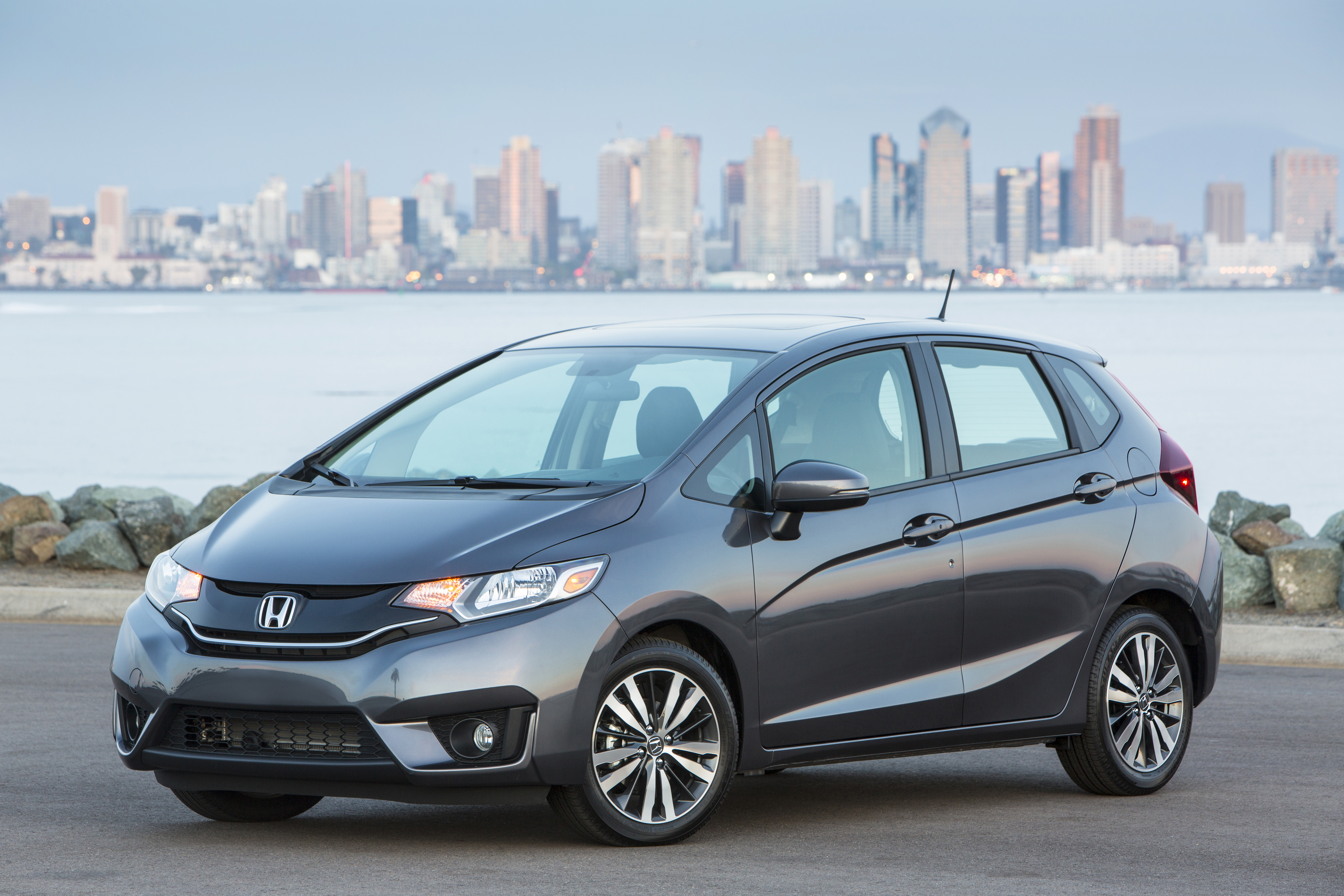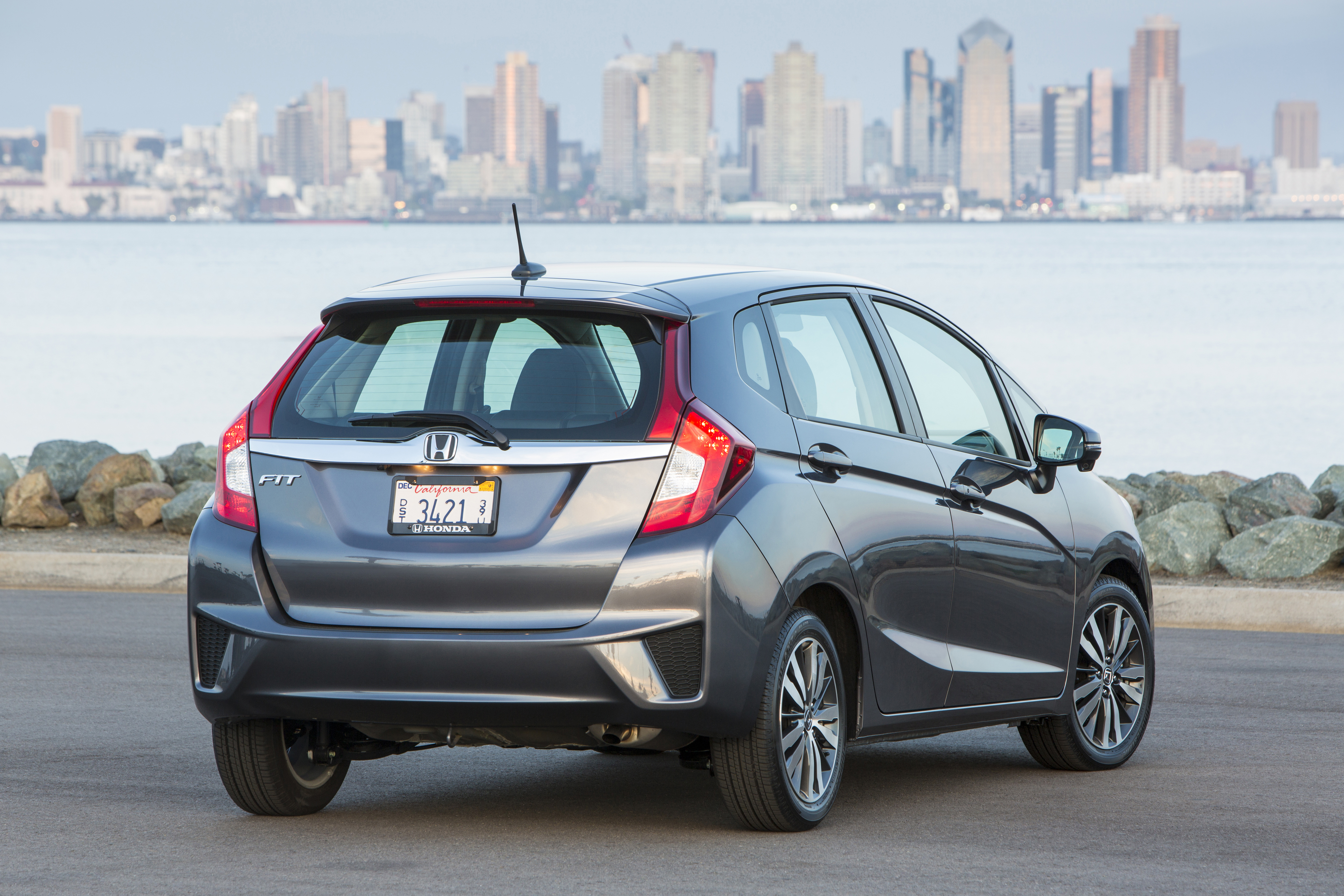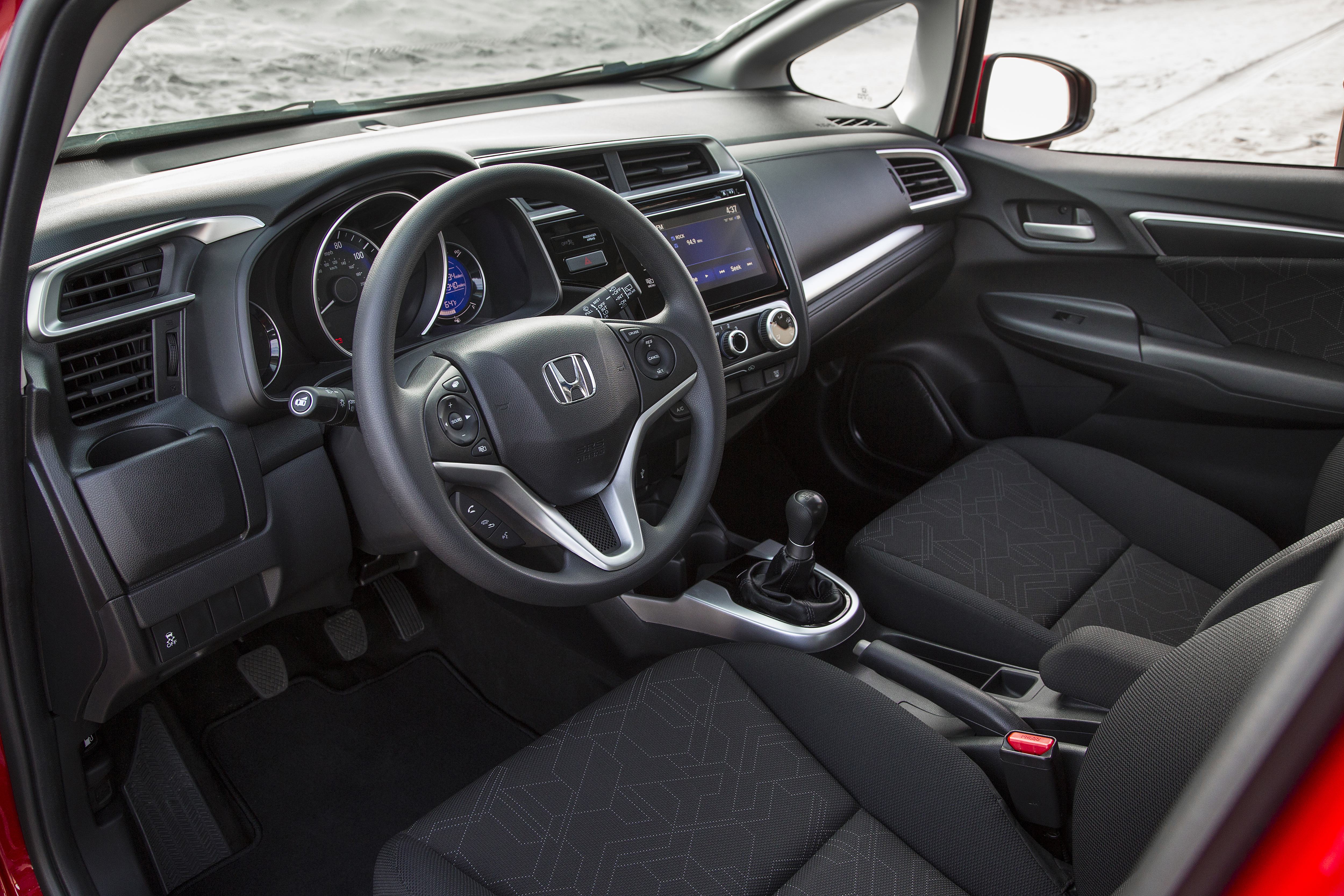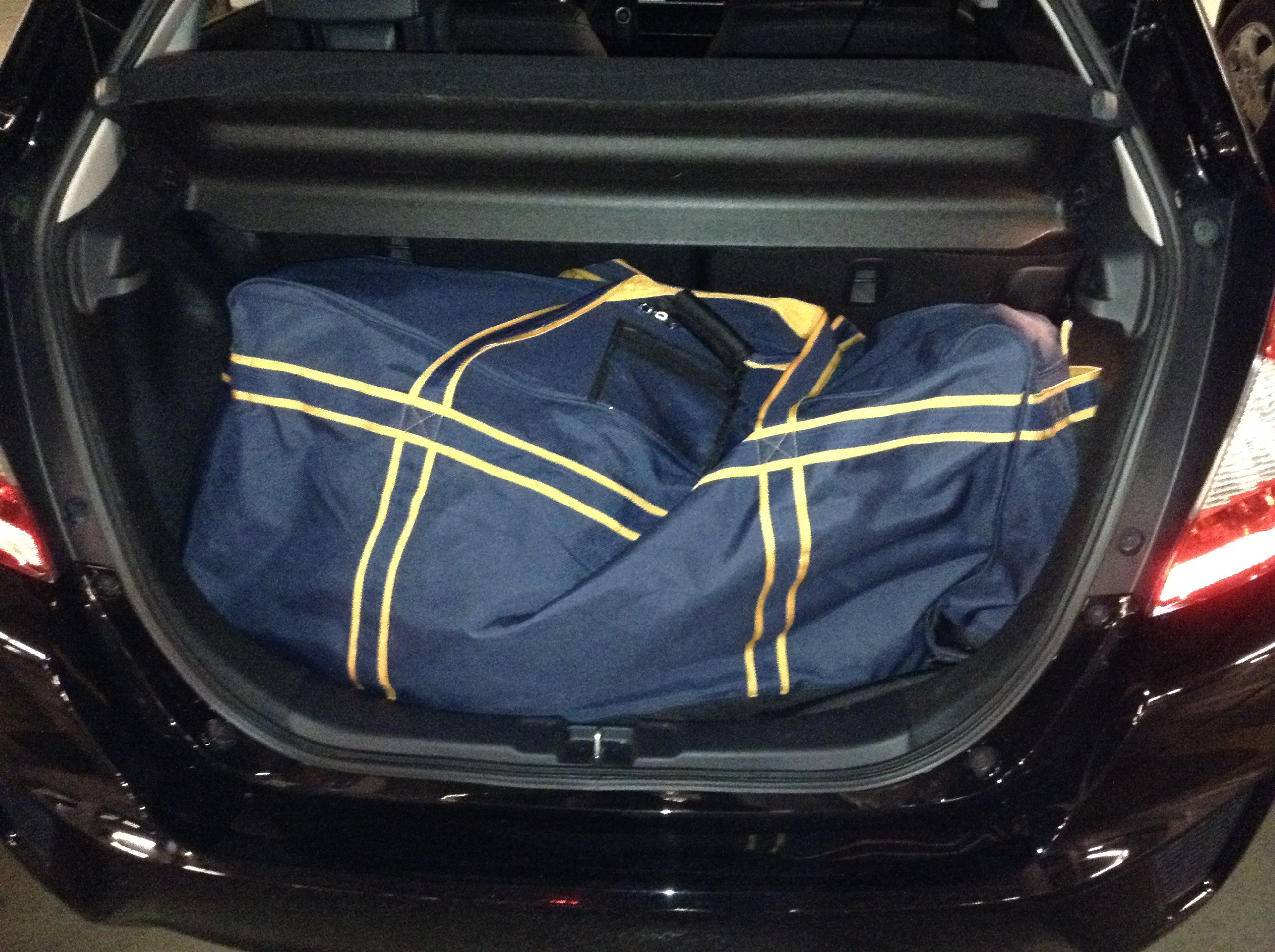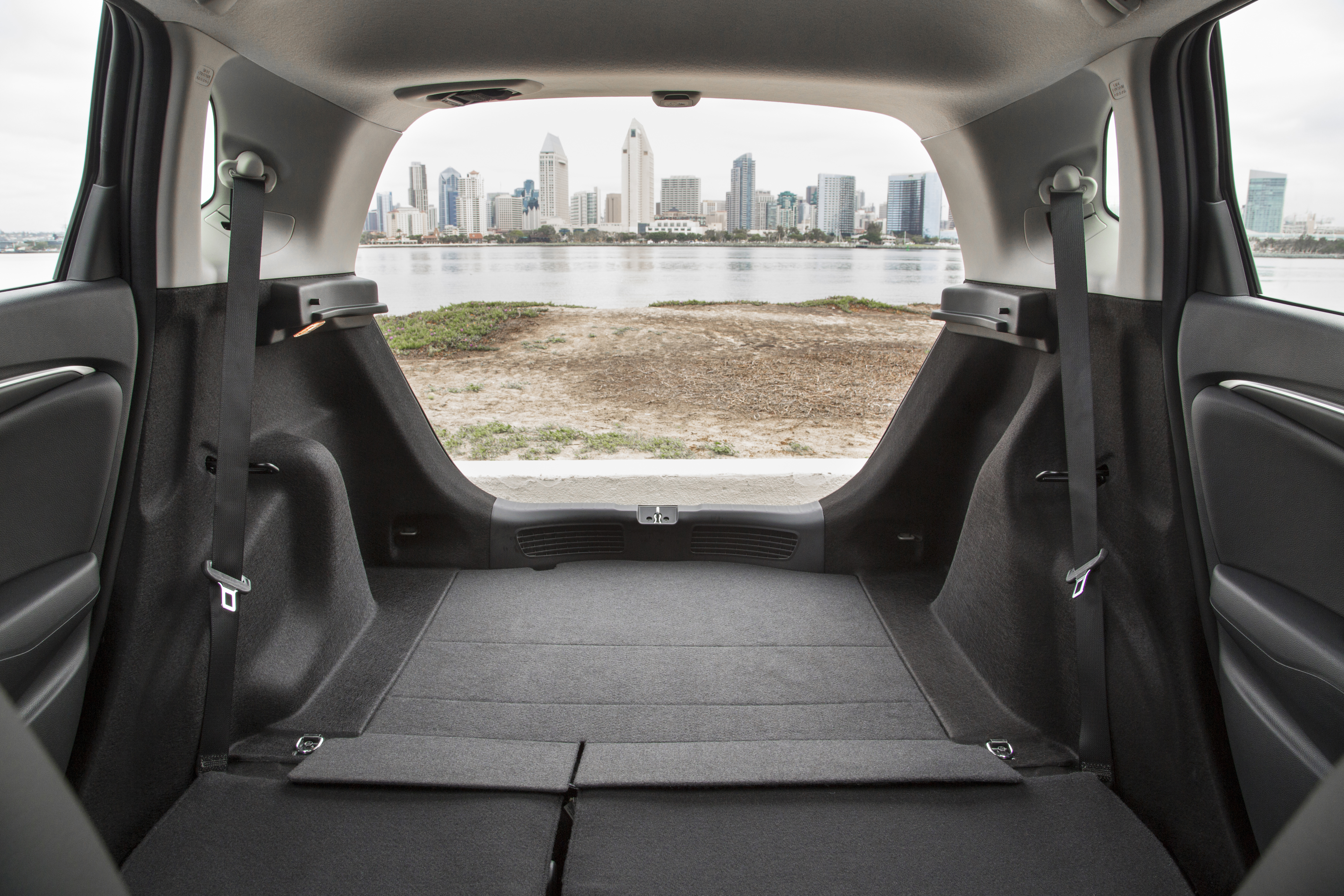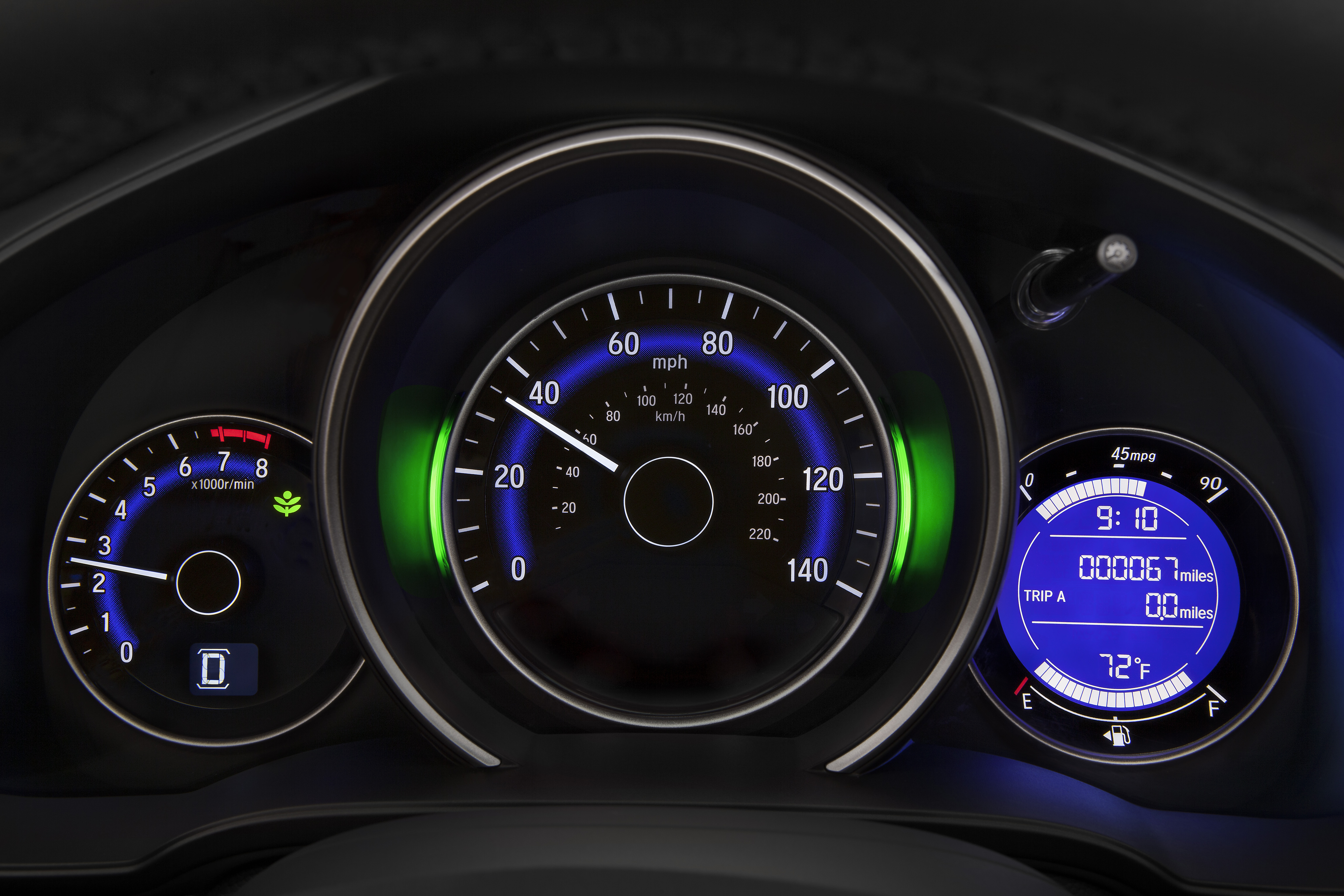Honda recently indulged my desire to try one of the snazziest four-door hatchbacks on the market today: the 2015 Honda Fit.
The name so precisely matches Honda’s vision for this vehicle that I may stumble and write puns unwittingly throughout this review. I apologize for that in advance.
Appearance
My tester, the EX-L Navi, looked sharp in black paint, leading into a black interior. A short front grill bends back to a steep front hood that forms a straight line with the windshield. From front to back, sharper edges distinguish this Fit from earlier editions of the car. Wheels are at the corners, hinting at go-kart-like handling fun.
Cabin
Carmakers know it takes more than a sporty exterior to sell a hatchback. Step inside the Fit and you’ll see Honda’s devotion to delivering an interior so upscale you’d easily think you’re in a more expensive vehicle.
Black leather wrapped the steering wheel, shift knob and seats. The shift knob in particular stood out. Mounted on a short shaft, the six-gears-plus-reverse etching was framed by lovely stitching that suggested the knob was an undersized black baseball. The same stitching holds the leather on the steering wheel, though it’s less apparent there since it’s on the inside. Adding that baseball-mitt stitching on the leather seats would have completed the look.
A tall vehicle, the Fit easily accommodates my 6’5″ frame, even with the optional moonroof. Looking in the rear view mirror while stopped in traffic, I noticed two people squeezed together in a very compact vehicle. That made me realize just how wide and roomy the Fit’s cabin actually is.
Storage cubbies abound. My favorite might be the centre armrest that opens up to fit an iPad.
Storage
In fact, when I took a good look at the car, it seems as though it’s just about all cabin. The 1.5L engine seems shoehorned in front, with all the regularly serviced bits easy enough to reach. The rear hatch had enough room for my hockey bag. I might have been able to squeeze a messenger bag in as well, without using the split-folding rear seats.
Honda outlines four different cabin configurations in its sales materials. They include Utility Mode, which is what you picture when you fold down both seats. The resulting 1,492 litres of cargo space would prove ideal for a pickup at IKEA .
In Tall Mode, large house plants can reside in about four feet from top to bottom of the car if you fold the rear seat up.
Seating
I set the drivers seat all the way back and my arms were comfortable when reaching for the wheel. My legs, on the other hand, stayed bent so that my thighs didn’t touch the seat. I have to conclude that the pedals are closer to the drivers seat than they are in my daily driver. A good look from outside the car told me that the dead pedal (the stationary platform for the driver’s left foot) probably rests on the front left wheel well.
Kudos to Honda for making the cabin so roomy that I fit in the rear seat even with the drivers seat moved as far back as it would go. I didn’t even have to bend my neck, which is rare even in the back seats of many sedans.
Here’s a head-scratcher: Honda put the Fit’s gas cap cover release latch near the front hood release latch, under the dashboard. I can deal with this minor inconvenience on the infrequent occasions when I pop the hood. Making drivers reach this far for the gas cap cover release strikes me as odd.
Driving
The Fit doesn’t deliver head-snapping acceleration, but it can hustle from a stop. All trim levels ship with a 1.5-litre, 16-valve, Direct Injection DOHC, i-VTEC® 4-cylinder Earth Dreams™ engine. It puts out 130 horsepower @ 6600 rpm and 114 lb.-ft. of torque @ 4600 rpm. A satisfying growl penetrates the cabin when accelerating with vim.
My 6-speed tester with the aforementioned short shift lever let me work through the gears with gusto. The manual transmission ships with Hill Start Assist, which explains why I didn’t roll back when stopped on an uphill grade. The engine doesn’t seem to want to slow the car down much, if at all, when I downshifted. This was great for extra passing power on the highway and lousy for controlling my speed on down slopes.
Honda also ships the Fit with a CVT-equipped automatic, and they’ll program seven artificial gears on that CVT that drivers can click through using paddle shifters.
Vehicle Stability Assist (VSA) aka Electronic Stability Control (ESC) appears on a button to the left of the steering wheel. The summer roads I drove during my week with the Fit didn’t ask anything of VSA.
Technology
Honda kept the Fit’s dashboard relatively straightforward, forgoing the “boy-racer” graphics that dance on many modern dashboards.
The speedometer and tachometer dominate the dash. To the right, an information display adds fuel level, a clock, outside temperature, instant fuel economy… useful stuff, nothing overly flashy.
The centre stack made me nervous when I first saw it. Honda’s Display Audio system is largely devoid of physical controls, like dials and buttons. (The audio system in my tester looked different than the one in the photo earlier in this review.) The last time I drove a car with almost no physical buttons and no dials on the stack, the controls located there proved difficult for me to use while keeping my eyes on the road.
I shouldn’t have worried. Icons and controls proved easy enough to see with a glance and control effectively while looking away. For instance, radio controls were all large icons. Tuning to different stations, choosing preset stations and other activities proved intuitive and didn’t require much attention.
Each time I used my right turn signal, the touchscreen showed the view from the rear-facing camera located under the right door mirror. This is Honda’s Lanewatch system, and I could switch the screen to this camera’s view anytime I wanted to by pressing a button on the left stalk, where the Fit’s lighting controls reside. Honda also includes a standard multi-angle rearview camera.
The HondaLink system lets drivers use approved apps while on the go. Features include several streaming audio options, like Aha, Siri Eyes Free, emergency assistance and HandsFreeLink, Honda’s method of enabling drivers to take calls safely while driving.
Climate controls were also touch-based, and while I prefer physical dials and buttons, these controls were easy to use as well. Two physical buttons for the seat heaters nest beside the emergency brake lever.
Honda sells the base Fit DX for $14,575 MSRP. Prices range up to $22,595 MSRP for the Fit EX-L Navi with CVT. This mix of practicality, fuel economy and fun ought to make it a natural fit (pun intended) for anybody’s automotive budget.
